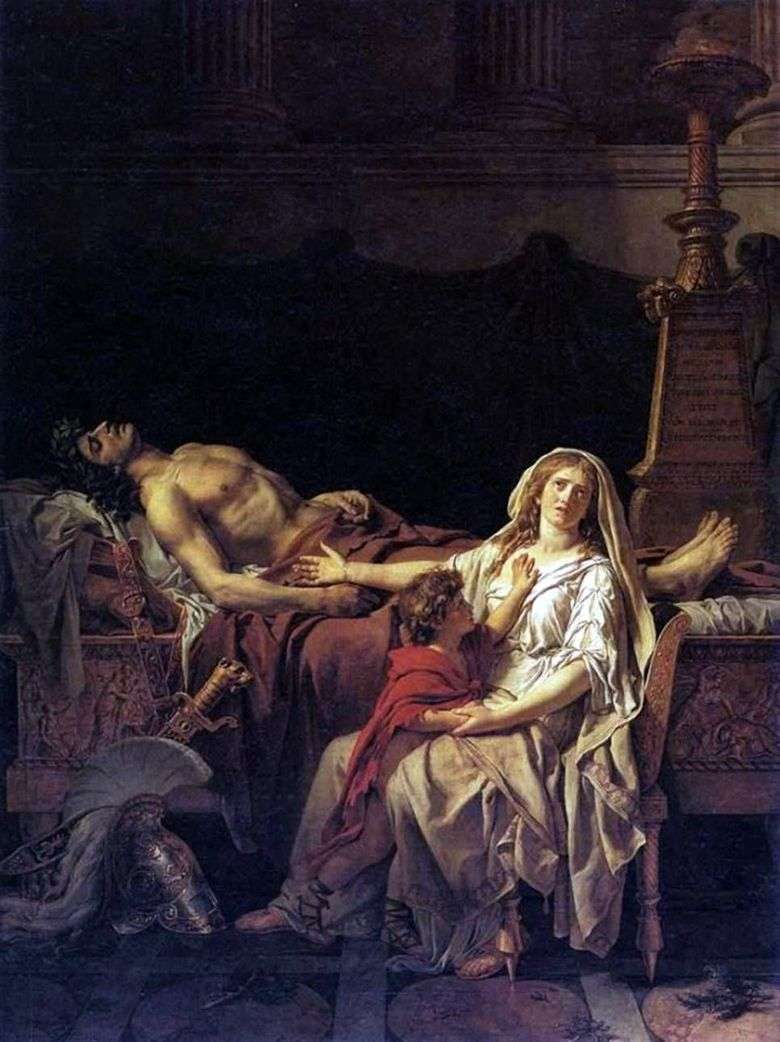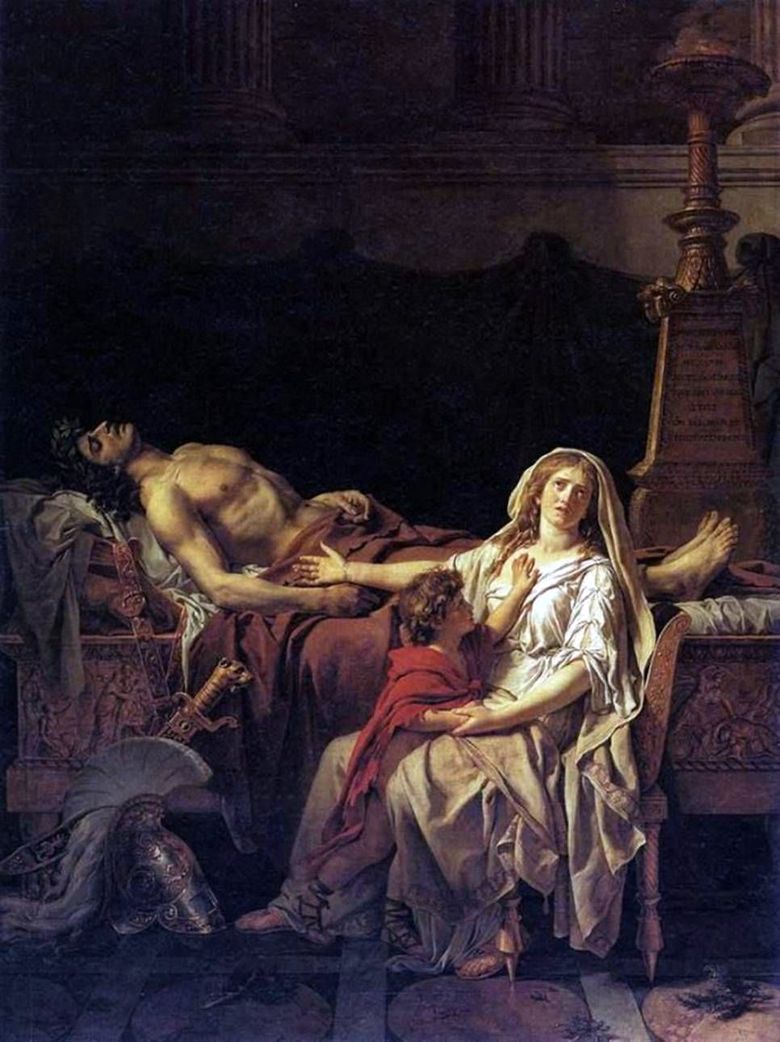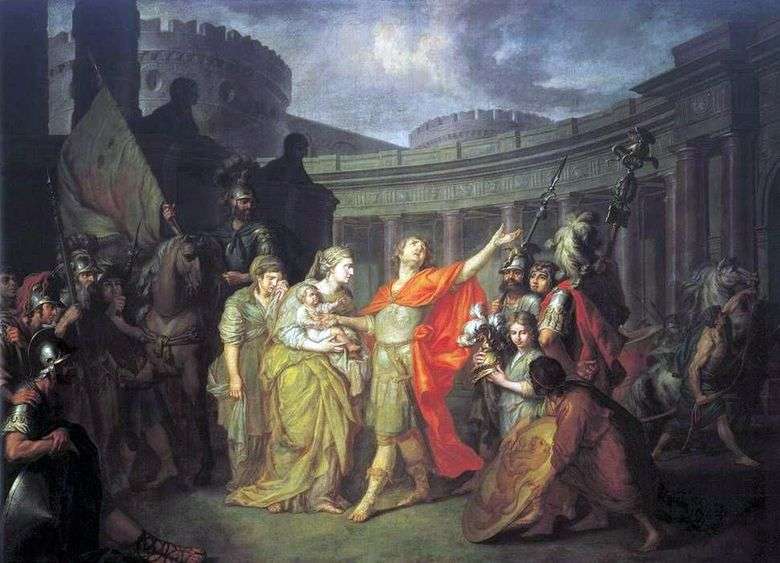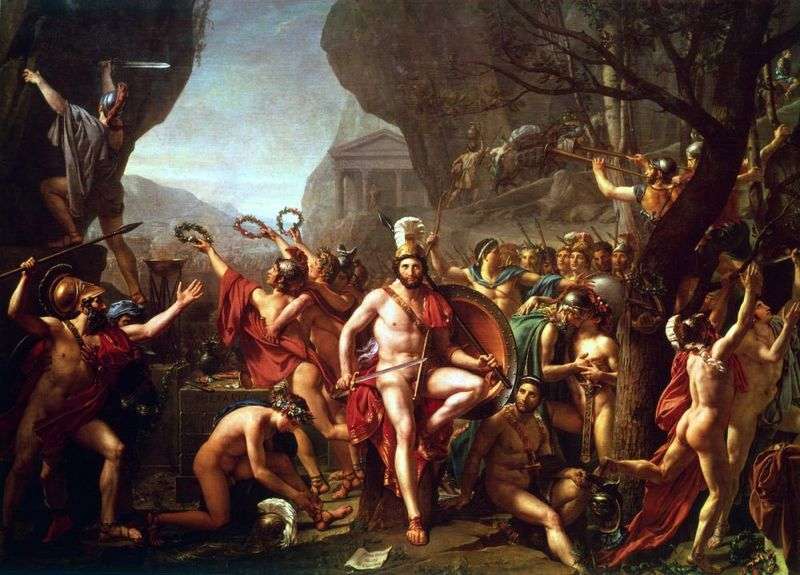
Painting of the French artist Jacques Louis David “Andromache at the body of Hector”. The size of the painting is 275 x 203 cm, canvas, oil. In Moscow, the Pushkin Museum of Fine Arts holds a sketch of “Andromache, mourning Hector” to the large canvas located in the Louvre.
The second significant historical canvas of the artist was the painting “Andromache at the body of Hector”, which also received critics and art historians a benevolent reception in the Salon of 1783. The dramatic scene is represented in it against the backdrop of a bare antique decor – a majestic antique bed, Doric columns, a well-known engraving of the chandelier, spear and shield of Hector, borrowed from the works of Poussin.
The composition of the canvas with the sitting at the bed Andromache repeats the scene “Death of Meleager”, reproduced in the relief of the ancient sarcophagus. Following the classical pattern will be combined in the artist’s work with the introduction of individual traits, a diverse transfer of feelings of heroes.
The plot of this picture goes back to the “Iliad” of Homer: Hector, the valiant leader of the Trojans, was defeated in a duel by Achilles and mourned by the faithful wife of Andromache. The socio-political meaning of this work is obvious. Andromache with a theatrical gesture points to the body of the hero who gave his life for his native city. The cult of the motherland in the French society of pre-revolutionary times was opposed to the idea of serving the royal authority. The work is clear and simple, the cut-off modeling is full and clear.
Great attention is paid to David’s historical authenticity of the depicted environment. Andromache, the wife of Hector, the daughter of King Cetion in the mythical city of Thebes and the wife of Hector, belongs to the noblest female images of Homer’s Iliad. Even during her early youth, her father and seven brothers were killed by Achilles. Then, after leaving Hector, Andromache gave him Astianaxus and became attached to her husband by her warmest love, the touching monuments of which were her conversation with him before the departure of Hector to the battle with Achilles, as well as her weeping for the murdered one.
After the conquest of Troy, Andromache was given to the prey by the son of Achilles, Pyrrhus, who took her with him to Epirus, and where she bore him a son. Subsequently Andromache became the wife of Helen, the brother of Hector, and bore him the son of Kestrin. After the death of Helen, Andromache, together with one of her sons, returned to Mysia, where this son acquired the region of Tehérnia and gave his name to the city of Pergamum founded by him. In honor of Andromache there was built a temple. Euripides used the image of Andromache as the heroine of the tragedy of the same name.
 Andromache en el cuerpo de Hector – Jacques Louis David
Andromache en el cuerpo de Hector – Jacques Louis David Hector’s farewell to Andromache by Anton Losenko
Hector’s farewell to Andromache by Anton Losenko Hector invites Paris to the battle by Angelika Kaufman
Hector invites Paris to the battle by Angelika Kaufman Andromaque chez Hector – Jacques Louis David
Andromaque chez Hector – Jacques Louis David Priam, who asks Achilles for the body of Hector by Alexander Ivanov
Priam, who asks Achilles for the body of Hector by Alexander Ivanov La despedida de Héctor a Andrómache – Anton Losenko
La despedida de Héctor a Andrómache – Anton Losenko Death of Marat by Jacques-Louis David
Death of Marat by Jacques-Louis David Leonid at Thermopylae by Jacques-Louis David
Leonid at Thermopylae by Jacques-Louis David